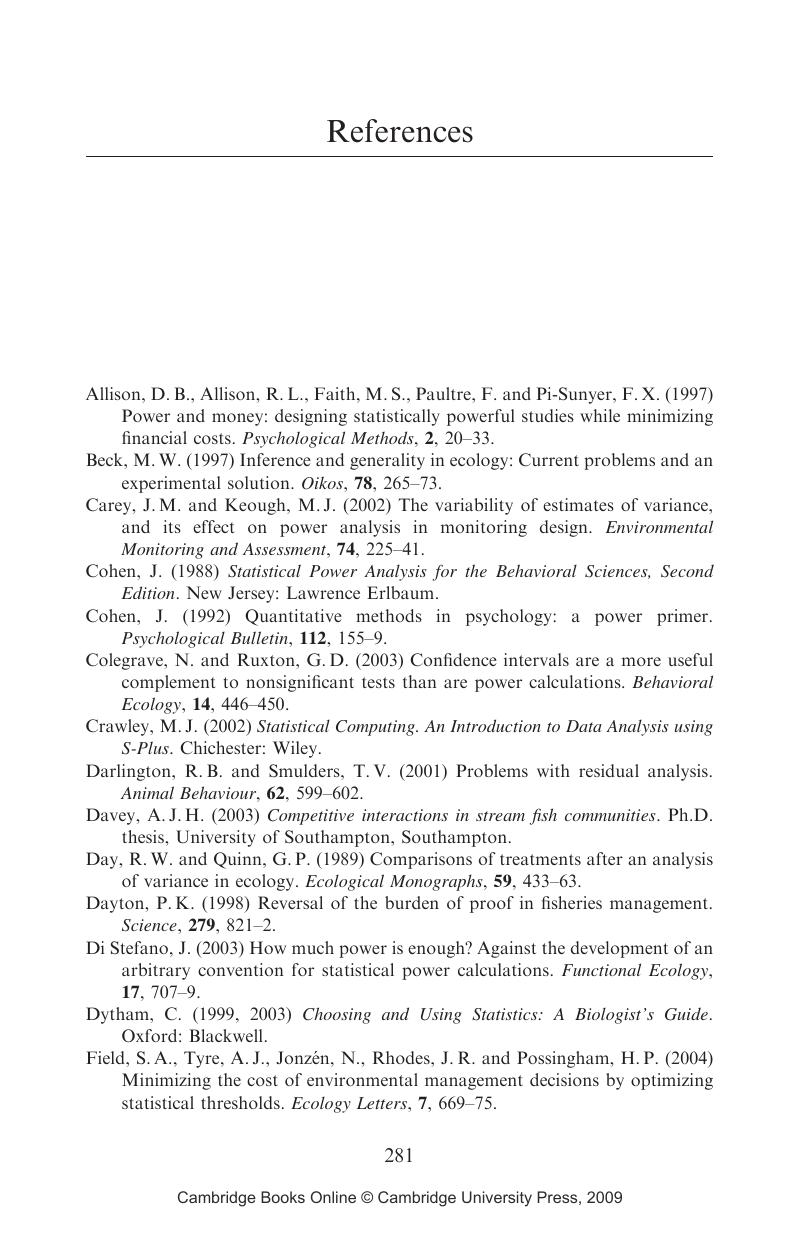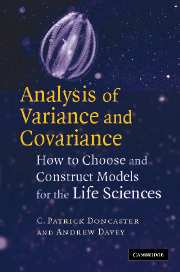Book contents
- Frontmatter
- Contents
- Preface
- Introduction to analysis of variance
- Introduction to model structures
- 1 One-factor designs
- 2 Nested designs
- 3 Fully replicated factorial designs
- 4 Randomised-block designs
- 5 Split-plot designs
- 6 Repeated-measures designs
- 7 Unreplicated designs
- Further Topics
- Choosing experimental designs
- How to request models in a statistics package
- Best practice in presentation of the design
- Troubleshooting problems during analysis
- Glossary
- References
- Index of all ANOVA models with up to three factors
- Index
- Categories of model
- References
References
Published online by Cambridge University Press: 13 November 2009
- Frontmatter
- Contents
- Preface
- Introduction to analysis of variance
- Introduction to model structures
- 1 One-factor designs
- 2 Nested designs
- 3 Fully replicated factorial designs
- 4 Randomised-block designs
- 5 Split-plot designs
- 6 Repeated-measures designs
- 7 Unreplicated designs
- Further Topics
- Choosing experimental designs
- How to request models in a statistics package
- Best practice in presentation of the design
- Troubleshooting problems during analysis
- Glossary
- References
- Index of all ANOVA models with up to three factors
- Index
- Categories of model
- References
Summary

- Type
- Chapter
- Information
- Analysis of Variance and CovarianceHow to Choose and Construct Models for the Life Sciences, pp. 281 - 283Publisher: Cambridge University PressPrint publication year: 2007



